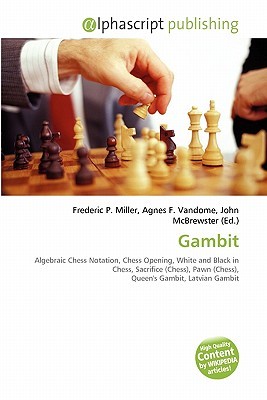
- Mēs nosūtīsim 10-14 darba dienu laikā.
- Izdevējs Alphascript Publishing
- ISBN-10 : 6134074454
- ISBN-13 : 9786134074452
- Formāts: 15.2 x 22.9 x 0.5 cm, minkšti viršeliai
- Valoda: Anglų
- Extra -10% atlaide, ievadot kodu: EXTRA
Gambit + bezmaksas piegāde! | Bookbook.lv
Atsauksmes
Apraksts
Please note that the content of this book primarily consists of articles available from Wikipedia or other free sources online. High Quality Content by WIKIPEDIA articles! A gambit (from ancient Italian gambetto, meaning tripping) is a chess opening in which a player, most often White, sacrifices material, usually a pawn, with the hope of achieving a resulting advantageous position. Some well-known examples are the King's Gambit (1.e4 e5 2.f4), Queen's Gambit (1.d4 d5 2.c4), and Evans Gambit (1.e4 e5 2.Nf3 Nc6 3.Bc4 Bc5 4.b4). A gambit used by Black may also be called a gambit (e.g., Latvian Gambit (1.e4 e5 2.Nf3 f5), Englund Gambit (1.d4 e5), but is sometimes called a "countergambit" (e.g., Albin Countergambit) (1.d4 d5 2.c4 e5) or Greco Counter-Gambit, an old-fashioned name for the Latvian Gambit). The word "gambit" was originally applied to chess openings in 1561 by Spanish priest Rúy López de Segura, from an Italian expression dare il gambetto (to put a leg forward in order to trip someone). Lopez studied this maneuver, and so the Italian word gained the Spanish form gambito that led to French gambit, which has influenced the English spelling of the word. The broader sense of "opening move meant to gain advantage" was first recorded in English in 1855.10 EXTRA % atlaide
Kupona kods: EXTRA
Akcija beidzas 7d.07:34:01
Atlaides kods derīgs pirkumiem no 10 €. Atlaides nav kumulatīvas.
Derīgs tikai pirkumiem tiešsaistē.

- Izdevējs Alphascript Publishing
- ISBN-10: 6134074454
- ISBN-13: 9786134074452
- Formāts 15.2 x 22.9 x 0.5 cm, minkšti viršeliai
- Valoda: Anglų

Atsauksmes